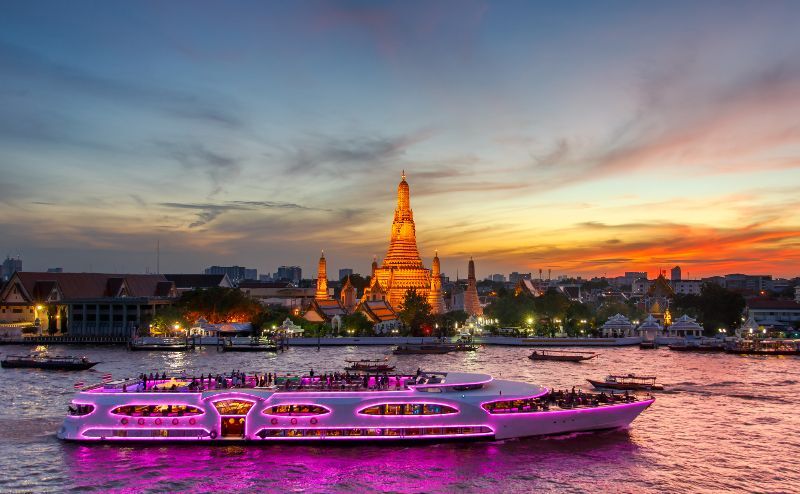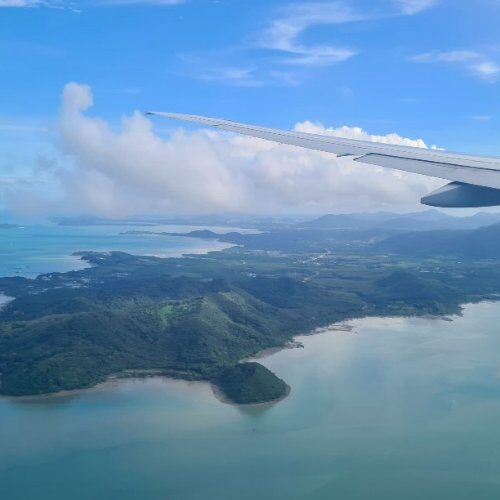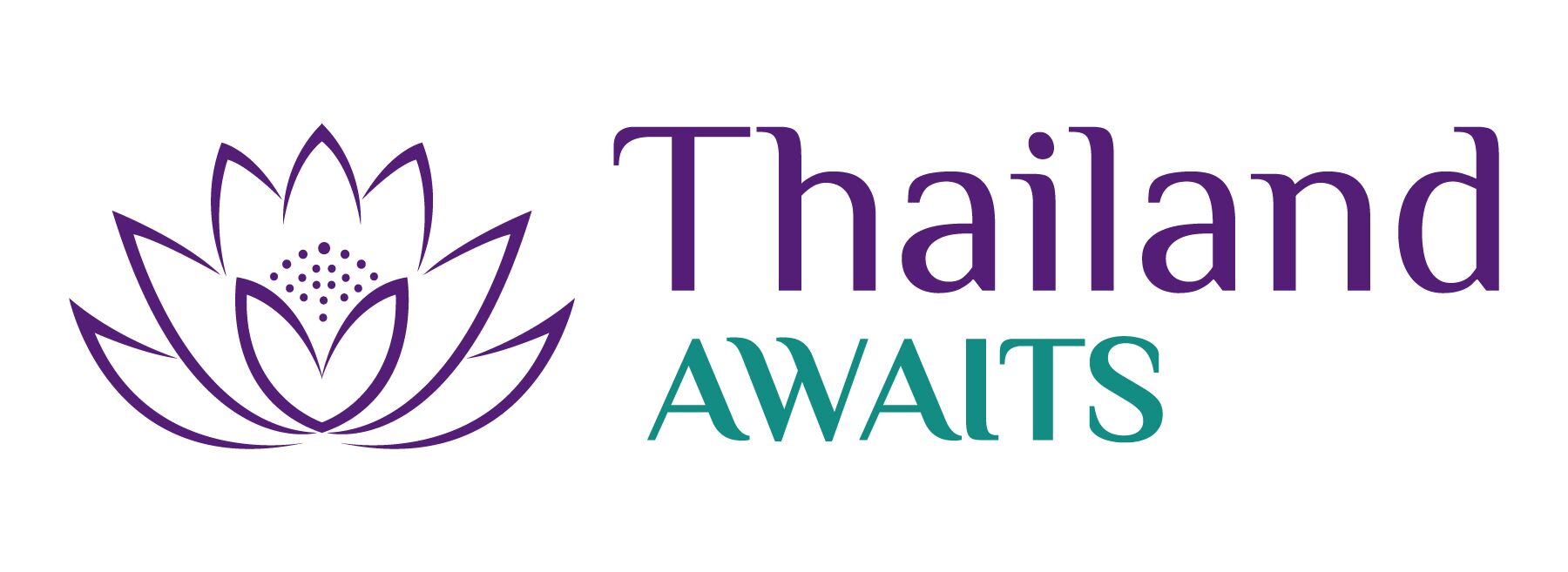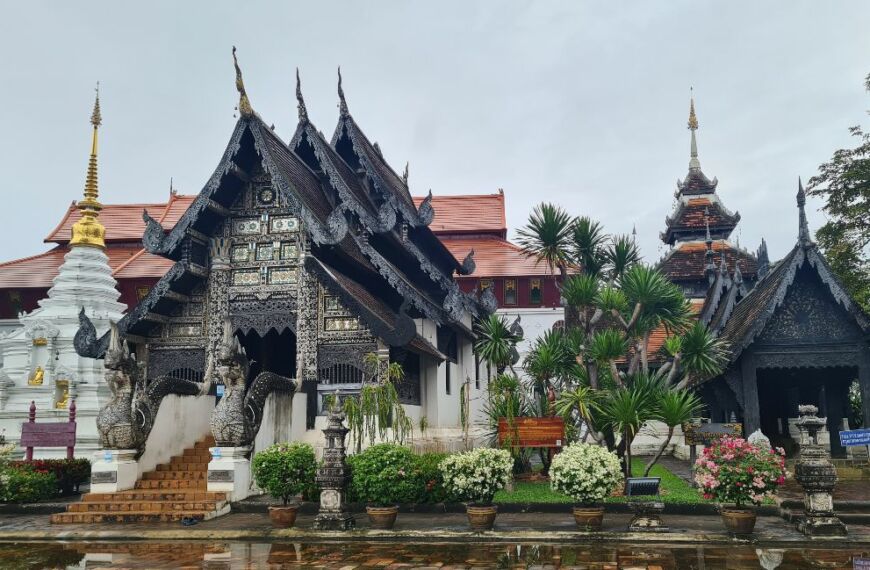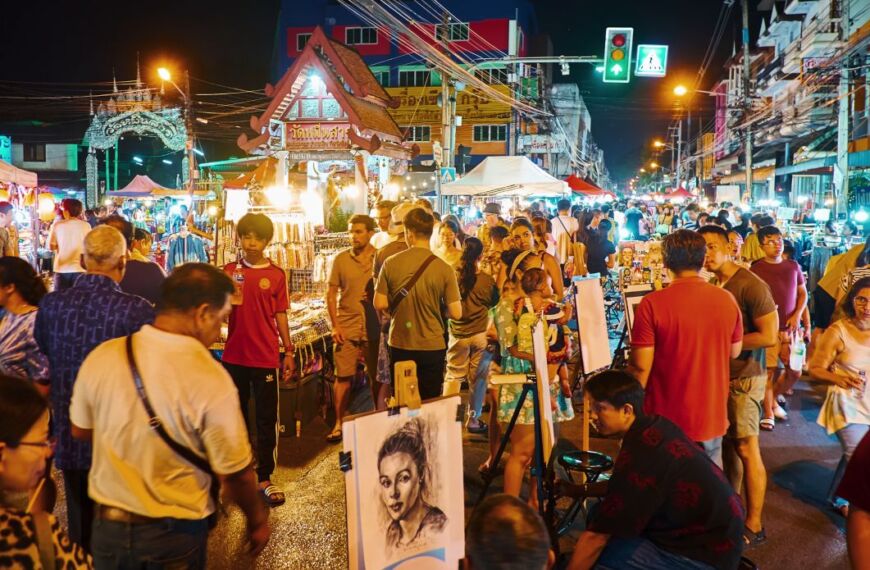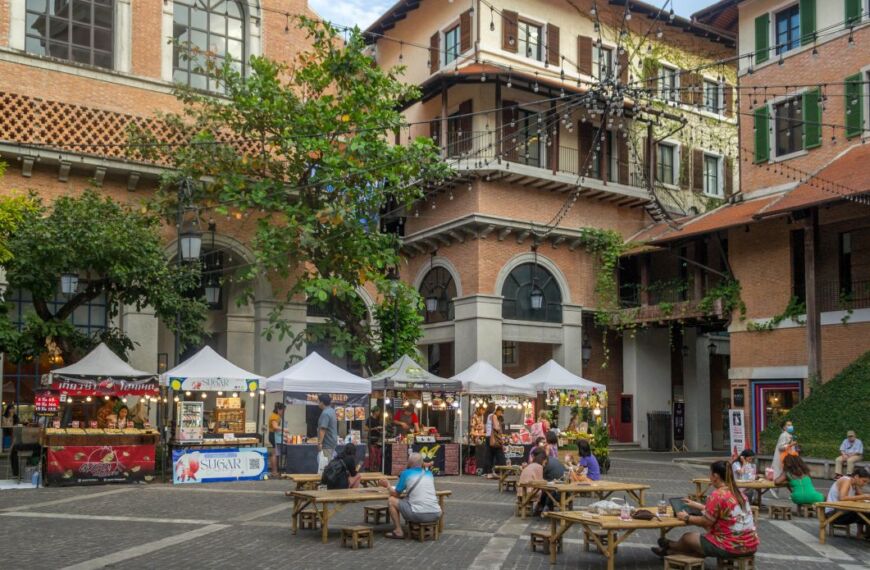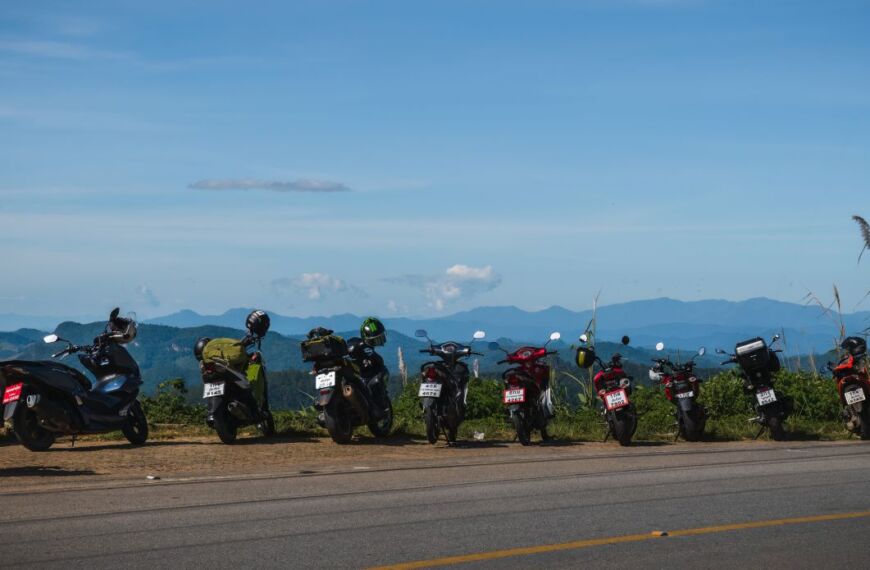Chiang Mai Travel Guide
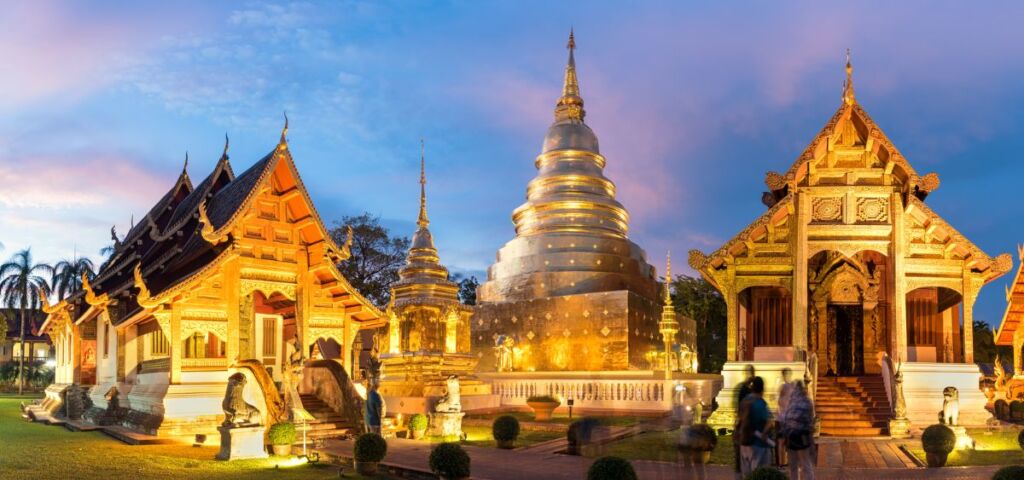
You have heard you should include a visit to Chiang Mai on your trip to Thailand, but you are not sure why? Well, our Chiang Mai travel guide is a good place to learn more about this city and the best times to visit.
Chiang Mai is an ancient Thai city in the mountains of northern Thailand. Founded in 1206, it was the capital of the independent Lanna Kingdom from 1206 to 1558. The city has much to offer from ancient temples, lush rainforests, and picturesque waterfalls, traditional villages, and a bustling market scene.
With over a dozen national parks in the area waiting to explore, Chiang Mai is an ideal place for anyone who loves nature. The most popular place to head is Doi Suthep National Park, 20km from Chiang Mai. Home of the Doi Suthep Temple and the Hmong Doi Pui Village.
A little further afield is Doi Inthanon National Park is 95km from Chiang Mai. As well as being home to Thailand’s highest peak, you will also find amazing hiking tracks and the best of Chiang Mai’s famous waterfalls.
Doi Inthanon, Thailand’s highest peak reaching 2,585 meters (8,440 feet) is part of the greater Himalayan range.
Founded in the 1300s, its old city area still has traces of the walled fortifications that once surrounded it when it was an important cultural and religious centre. The old town walls are surrounded by a moat with a gate at the centre of each wall, making it very easy to navigate the city.
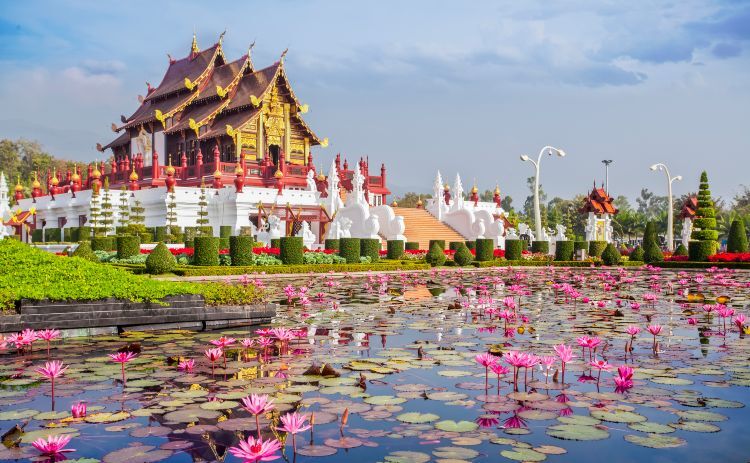
Chiang Mai is an excellent base from which to explore the rest of northern Thailand. Take a day tour to Chiang Rai and Lampang, or perhaps a longer journey to visit Pai or the Golden Triangle.
Chiang Mai is home to 125,000 residents, including a large expat community of digital nomads.
Getting to Chiang Mai
Chiang Mai International Airport (CNX) is only 5 km from the city centre and a taxi will cost you approx 160 baht. There are direct flights from major cities in Asia, including Malaysia, Singapore, Seoul, and Hong Kong. The airport also services 13 cities within Thailand, with Bangkok, Phuket, Koh Samui, and Krabi being popular routes.
There are many rental car desks at the airport and the roads in Northern Thailand are in good condition, making this area perfect for road tripping provided you are a confident driver and carry an international driver’s license. Alternatively, airport transfers are very affordable. There is a public bus that connects to the city centre for approx 40 baht.
You can also take a train from Bangkok to Chiang Mai. The overnight trip is most popular, with the journey taking between 11 and 14 hours. With a flying time of just over an hour and several budget carriers offering flights from Bangkok for similar prices to a compartment on the overnight train, this trip is really one for train lovers rather than budget travellers.
Getting Around Chiang Mai
Getting around the centre of Chiang Mai city is easily done on foot, for longer journeys songthaews, converted pickup trucks, are a cheap way to get from A to B.
Tuk-tuks are also common and most journeys cost 100 baht with the old town and 200 baht further afield. We recommend you download the ride-sharing app Grab if you prefer to travel in air-conditioned comfort.
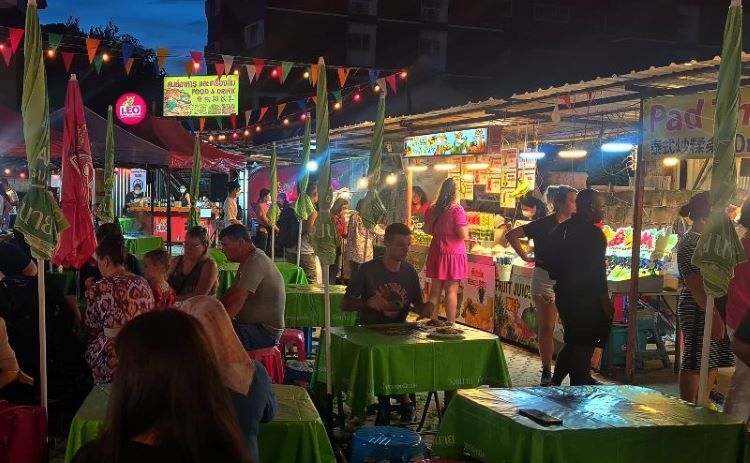
When is the best Time Visit Chiang Mai
The best time to visit Chiang Mai is during the cool season, from November to January, when the weather is most pleasant. During this period, temperatures range from 15°C to 30°C (59°F to 86°F), ideal for exploring and enjoying outdoor activities. Rainfall is minimal, making it perfect for sightseeing.
The months to avoid are February to May, which are extremely hot, with temperatures often exceeding 35°C (95°F). This period is also known as burning season when farmers from across northern Thailand, Cambodia, Laos and Vietnam burn their field before they plant new crops. Pollution levels at this time of year are some of the worst in the world.
The burning significantly reduces air quality, leading to high levels of particulate matter (PM2.5) in the air. We don’t recommend visiting at this time for more than a few days at most and bring some masks with you to protect yourself from the particles in the air.
The last season, known as the wet, green or rainy season lasts from June to October. While heavy downpours can disrupt travel plans, this is not a terrible time to be in Chiang Mai. We visited in late September 2022 for a month and found that while it did rain for part of most days it was still a pleasant stay. The crowds were low and prices were appealing!
Average Temperatures and Rainfall in Chiang Mai
| Month | Avg. Temperature (°C) | Avg. Temperature (°F) | Avg. Rainfall (mm) |
|---|---|---|---|
| January | 19 – 29 | 66 – 84 | 5 |
| February | 21 – 32 | 70 – 90 | 5 |
| March | 23 – 34 | 73 – 93 | 10 |
| April | 26 – 36 | 79 – 97 | 50 |
| May | 25 – 34 | 77 – 93 | 160 |
| June | 24 – 33 | 75 – 91 | 125 |
| July | 24 – 32 | 75 – 90 | 140 |
| August | 24 – 32 | 75 – 90 | 220 |
| September | 24 – 31 | 75 – 88 | 240 |
| October | 23 – 31 | 73 – 88 | 125 |
| November | 22 – 29 | 72 – 84 | 60 |
| December | 19 – 28 | 66 – 82 | 10 |
The average time travellers spend in Chiang Mai is between three and five days, and you will find the must see temples in Chiang Mai here.
Latest Articles On Chiang Mai
Where to go next
Continue your holiday travels in Thailand. After Chiang Mai, the most popular destinations are Bangkok, Phuket, and Koh Samui.
